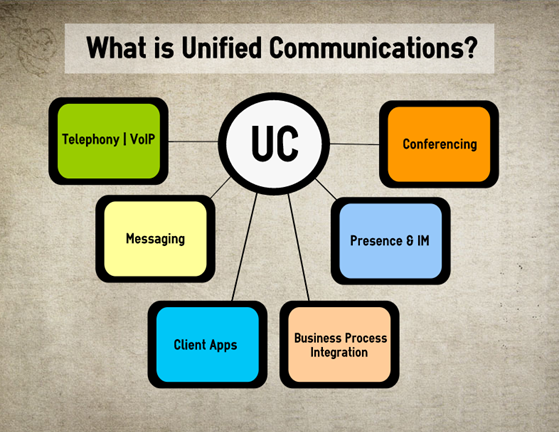Increasingly businesses and organizations of all sizes are realizing the benefits of deploying Unified Communications (UC) services. While many of these services are not new to large enterprises, organizations of all sizes now have the opportunity to leverage integrated and mature systems that can be cost effectively deployed. Most organizations now include highly mobile and collaborative workforces (mid-sized and small companies included) with remote workers and external team members that need to work together regardless of physical location. These workers need to be easily connected with their team members, customers, vendors, and partners in order to provide increased sales performance, rapid problem resolution, and most importantly improve overall customer satisfaction and loyalty to provide competitive differentiation. Escalated employee expectations have been fueled by the adoption of blockbuster consumer applications – Skype, Facebook, Facetime, Linked In, text messaging to name a few – which now means that IT teams must deliver tools that both improve collaboration and provide increased productivity across the variety of platforms (tablets, Smartphones, laptops, etc) that define the mobile workforce .

What is Unified Communications?
Unified Communications integrates several real-time communication services such as instant messaging (IM), presence information, voice calling, video calling, and web collaboration. These systems, when combined with the non-real-time stalwarts of business communication (Voicemail, E-mail, and Faxing) provide a single unified portal for team members to interact quickly and effectively with each other and customers alike. Furthermore, companies are experiencing real world value by finding ways to integrate UC with their line of business applications that they use on a daily basis.
What does it mean to the user?
UC allows employees to work wherever they need, from a home office or the golf course, and it gives them the “presence” of sitting at their desk in the office. It means voicemail is delivered to the Inbox and can be opened, reviewed, and dealt with from any device that they are comfortable with. Ultimately it means a team in multiple locations can collaborate in a fully immersive environment with audio, video, and web conferencing while discussing issues and making decisions quickly from a single user interface or app that is easy to use.
Why consider a move to a UC platform?
The technology has evolved and the integration of these systems is much simpler, in terms of deployment all the way the through the full lifecycle including ongoing support and maintenance. Several vendors (Microsoft, ShoreTel, and Cisco to name a few) now have solutions that are extremely reliable, easy to use, and provide a consistent approach to achieve business goals across all facets of an organization. These solutions work across hardware devices that users are familiar with and play a central role in the adoption of Mobility and BYOD (Bring Your Own Device) that organizations are currently considering. Voice over IP (Voice over Internet Protocol; simply VoIP) is a proven methodology that can be deployed with confidence and when using the VoIP standard of SIP trunking as an alternative to the more expensive traditional phone services such as PRI and POTS, businesses are experiencing lower monthly costs while also achieving increased flexibility with rapid deployment and agility to move SIP lines easily to other locations. Furthermore, hosted or “cloud” offerings, such as Microsoft’s Office 365 and Lync products along with ShoreTel Sky, have matured and provide an opportunity to provision these systems with little capital expense and with the resiliency that comes with hosted solutions.
Where’s the business benefit?
Employees and team members want and expect to work anywhere at any time – UC enables them to do so as if they are in the office. It has been proven that teams will collaborate with each other and customers more effectively with greater ease and consequently with increased productivity when UC is deployed and integrated within the culture. Given the evolution of these solutions, deployment should be considered as current email and voice PBX systems are approaching end-of-life. Often times, the ROI is fast with visible direct cost reductions in Telco expenses (deployment of VoIP, reduction in toll calling) and allowing workers to telecommute (reduced travel expenses). Additionally, new employees want and expect to be enabled to interact with team members through mechanisms that they have grown accustomed to (or grown up “with”) – Unified Communications potentially underpins a culture that can better recruit and retain key talent.
In subsequent posts, we will consider the relative strengths and evaluation metrics to be aware of when considering a Unified Communications solution along with pitfalls associated with deployments of all sizes.
RSM can help you leverage the power of Unified Communications and determine if a system makes sense for your organization. For more information on Unified Communications, contact RSM’s technology consulting professionals at 800.274.3978 or email us.
By: Chad Hosfield, Manager, Technology Consulting, RSM LLP

 RSMUS.com
RSMUS.com